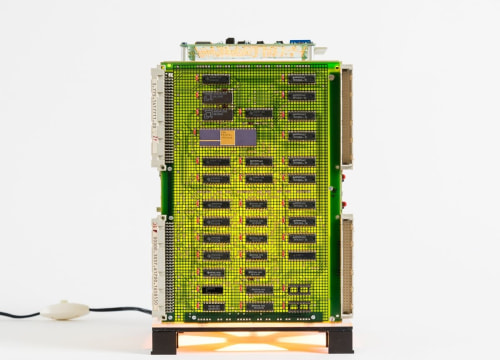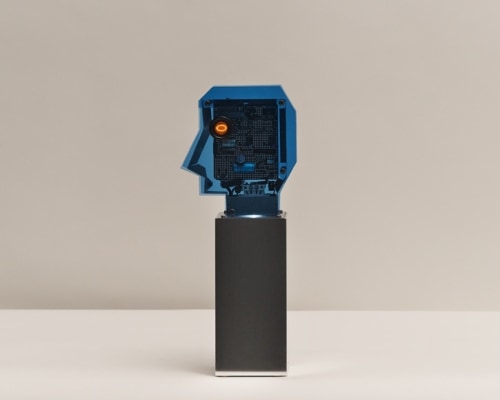

Gérard Haas was born in Paris in 1922. He had his first formative artistic experience as young child when he fell dangerously ill and was confined to his parents’ house for a great many months. Having discovered the pleasures of an older brother’s textbooks, he threw himself into the study of physics and mathematics, which in turn led to a fascination with electronics. By the age of eight he had developed an operable electronic object, a piece that presaged Haas’ mature output.
He fled the Nazis at the age of twenty, and was imprisoned in Spain for a year before escaping and joining the resistance in Casablanca. At the end of the war he was awarded the Legion d’Honeur, the Croix de Guerre, and the Medail des Evadés for his service in Europe and North Africa.
After the war Haas went to university in Grenoble, and upon graduating with a degree in electronic engineering embarked on a career as a sound engineer. His first position was at the Éclair-Journal newsreels, where he would become editor-in-chief before leaving in 1969. He then worked as a producer for Gaumont Actualités and a director at Le Musée des Sciences et Technique, and La Vilette Pathé-Cinéma.
All the while he created sculpture. His work was informed as much by his early fascination with electronics as his later career with them, for he saw the medium as an ideal representation of communication, and his pieces as a means of communicating with a world from which he had so long been isolated and alienated as a child.
The artist debuted one of his first major series of sculptures, entitled Faces, in the 1970s. Notable for its simple and reduced representation of human features such as eyes, noses, or mouths, the series, like those to come, made internal tangles of wiring into a major aesthetic element. The wiring acts as a kind of technical musculature or circulatory system, from which the piece is constructed and takes its life.
Next to come was Clocks, which emerged at the start of the following decade, and remains to this day as intriguing as any series made on man’s relationship with technology. In particular, it stands as a powerful reflection on the growing role of computers in the daily life of the industrialized population of the early eighties.
While each of the several hundred pieces Haas engineered is unique—in fact each is remarkably different from the others—the pieces share this common theme, central to both Faces and Clocks, of the intractable tie between man and technology. Electric all, his pieces do not merely light up a room, but interact with their audiences, creating repeating designs, flashing in time, or responding directly to sounds made in their vicinities. They truly communicate with their audience, actively participating in a way surely but dreamed of by a childhood Haas, and so rare to successful sculpture of its time and place.
Over the course of his long, illustrious career, Gérard Haas was shown throughout Europe, at among other Parisian galleries, Galerie Sculpture, Galerie Jean, Galerie Iris Clert, and Galerie Galliera. He was also shown variously at both the Le Grand Palais and L’International d'Art Contemporain, and is represented in the permanent collection of the American College of Greece in Athens.